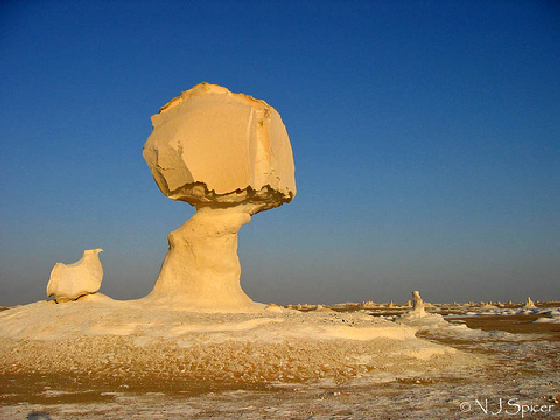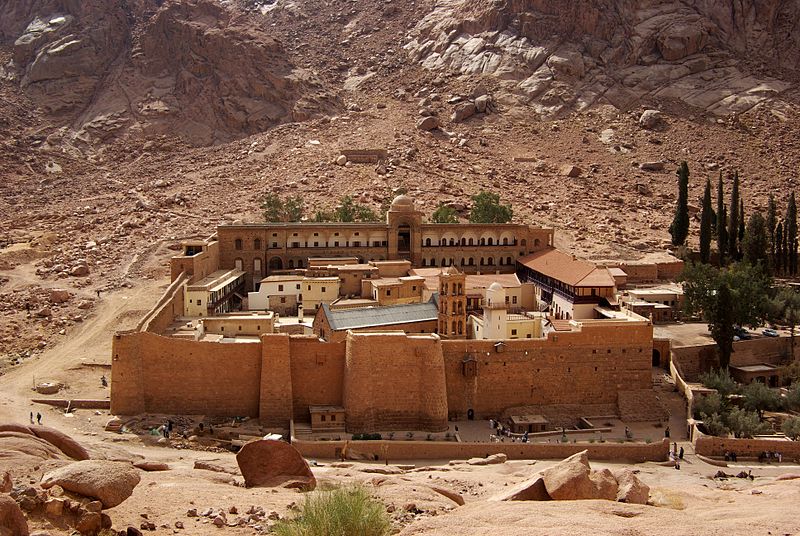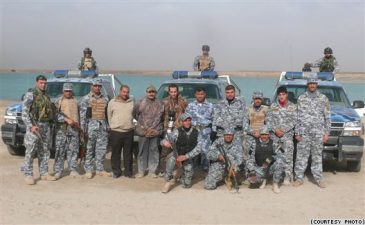
Egypt’s oases are getting ruined by tourism. Some locals fear that too much environmental regulation will imperil crucial source of income
Prior to the installation of an asphalt highway connecting the once peaceful region of Bahariya to Cairo, the oasis was mostly hidden from the greater world. Then archaeologists re-discovered the Valley of the Golden Mummies and tourism in Egypt soared, generating valuable income for the local community. However, the influx with tourists travelling from Cairo to Alexandria stopping at the White Desert, comes with a considerable environmental cost.
Eleven million people visit Egypt each year, of which 10% forego the traditional tourist destination and opt instead for the desert oases, according to Jon Jensen, a Cairo-based journalist.
Tourists trampling and 4x4ing over the White Desert
In Bahariya Oasis, one-third of the 40,000 residents now work in the tourism industry, which accounts for a large portion of this community’s income.

White stone formations at Bahariya
In addition to archaeological gems, the mystic white desert lures tourists and the locals who guide them. 4×4 Jeep adventures and camping are favorite activities, but drivers travel without thought to ecological sensitivity, and the pack in and pack out concept has not yet caught fire. As a result, the landscape is sullied with tracks and litter abounds. Last year 4 tons of this waste was collected, tour guide Dina Mahmoud tells Jensen.
Not far away in Israel, Israelis are banned from bringing in 4×4 cars to Sinai for this very reason, with the early peace draft and environmental plan developed by an Israeli leader who understood why roads along the sea should be set back for tourists and hotels and that is what they did.

St Catherine’s Monastery in Sinai
In response to the now obvious degradation, the Egyptian Environmental Affairs Agency established a national park in order to protect the region, fining drivers who go off established paths up to LE400. But it is not yet clear that these new policies are effective. A survey conducted by the Center of Environmental Research and Studies at Cairo University demonstrates that in the Giza protectorate, of which Bahariya is a part, garbage is one of the biggest barriers to enhanced environmental awareness.
The government also seeks to limit tourist traffic in order to maintain ecological integrity, but this idea is not popular with everyone. Assam Tawkif, who relies on sales to safari operators, explained to Jensen that the government needs to encourage even more visitors, not less. And others still doubt that the government will follow through at the of risk financial loss.
But eco-tourism, by design, need not deter from the economic and environmental plight of sensitive areas. The International Ecotourism Society includes these principles in their definition of a truly sustainable operation: minimal impact, heightened environmental and cultural awareness, positive experience for visitors and hosts, direct benefits for conservation, financial empowerment, and raised sensitivity to host country’s political, environmental and social climate.
Although Egypt’s overall environmental record is paltry, these may be steps in the right direction, combined as they are with recent educational programs aimed at improving environmental awareness. Once locals understand that protecting Bahariya in the short term will generate more income in the long term, it is possible that the community will adjust.
More News From Egypt:
Red Sea Spill Causes Oil Company Stocks to Drop
Egyptians Question the Health of Their Tap Water
Taking Israel’s Lead, Solar Water Heater Use on Rise in Egypt




I WROTE THE BOOK THE WESTERN DESERT OF EGYPT. THE WHITE DESERT IS NOT BAHARIYA OASIS. IT IS FARAFRA OASIS. TOUR COMPANIES FROM BAHARIA MAY TAKE YOU THERE BUT THEY ARE NOT THE ONES TO DETERMINE ITS LOCATION. GEOGRAPHY DETERMINES THE WHITE DESERT’S LOCATION. THE WHITE DESERT IS IN FARAFRA OASIS.
BAHARIYA DEPRESSION IS TOTALLY SURROUNDED BY ESCARPMENT. YOU MUST CLIMB OUT OF BAYARIYA OASIS VIA ITS SOUTHWESTERN ESCARPMENT TO GET TO FARAFRA. YOU MUST DESCENT A SECOND ESCARPMENT TO GET TO THE WHITE DESERT. THAT ESCARPMENT IS THE EASTERN LIMIT OF FARAFRA.
LOOK AT A MAP!
These images are indeed of the White Desert. However, the White Desert, in tourist lingo, is synonymous with the Bahariya Oasis, despite the fact that Farafra is closer to the White Desert. 99.9% of people arrive in Bahariya before continuing to the White Desert, and then to Farafra (not vice-versa). In any event, there are more restrictions in place than are listed here to prevent complete degradation of the area.
Thanks again Cassandra. These images were taken from flickr. If they are not of Bahariya, they are wrongly categorized there.
The photos are not of Bahariya Oasis. They are of the White Desert in Farafra Oasis.
I loved the images that you used. Hopefully the article will inspire more travelers to Egypt to tread a bit more softly.